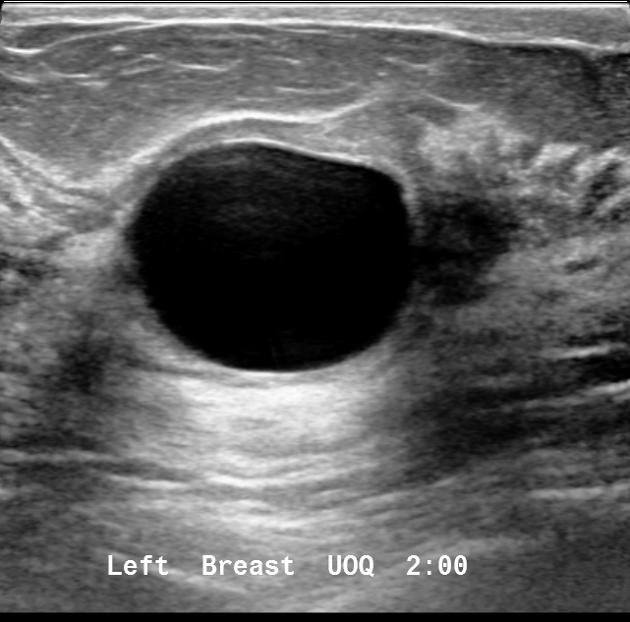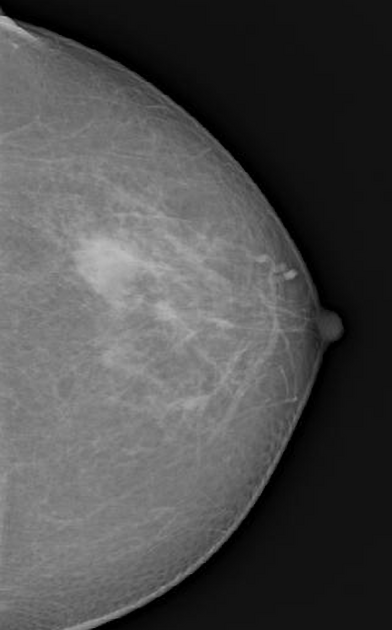Simple breast cysts are a common benign cause of a breast lump in women.
On this page:
Clinical presentation
Patients may be asymptomatic or present with a breast lump. Some patients may have associated pain or tenderness.
Pathology
Breast cysts are caused by blockage of the terminal acini with resultant dilatation of ducts. Cysts may be unilateral, although they tend to be bilateral and multifocal.
Cyst epithelium is cuboidal to columnar with flattening, or even atrophic change in larger cysts. Epithelial proliferation may lead to piled up masses. Epithelial overgrowth and papillary projections are not a rare finding in the cysts covered with apocrine epithelium. The stroma around the cysts represents the compressed fibrous tissue.
They can be classified according to size:
microcyst: <3 mm
macrocyst: >3 mm
Microcysts are found commonly in fibrocystic change.
Radiographic features
Ultrasound
The diagnostic sonographic features are the following:
oval or round shape
anechoic (no internal echoes)
circumscribed margins
Other findings may include the following:
reverberation artifact
smooth walls
peripheral calcifications
Mammography
Cysts appear as a breast mass with the following features:
oval or round shape
circumscribed margins
Multiple well-defined round masses in both breasts is suggestive of the presence of cysts.
Treatment and prognosis
Simple cysts are benign (BI-RADS 2). When typical features of a simple breast are seen, no further workup is required.
Symptomatic large cysts may warrant aspiration. In this situation, cytological analysis is usually not required, unless it contains bloody material 7. Simple cyst aspiration showing straw coloured fluid can be discarded.
Postaspiration ultrasound should confirm the cyst has disappeared completely, with no residual mass, and will confirm haemostasis. Complications from aspiration are virtually unknown but include bleeding and, theoretically, infection. Aspiration of cysts can be safely performed without cessation of aspirin therapy.
They should not increase in size in post-menopausal women.
Differential diagnosis
complicated cyst, which has internal low level echoes
complex cyst, which has both anechoic (cystic) and echogenic (solid) components
clustered microcysts, which are small and multiple







 Unable to process the form. Check for errors and try again.
Unable to process the form. Check for errors and try again.